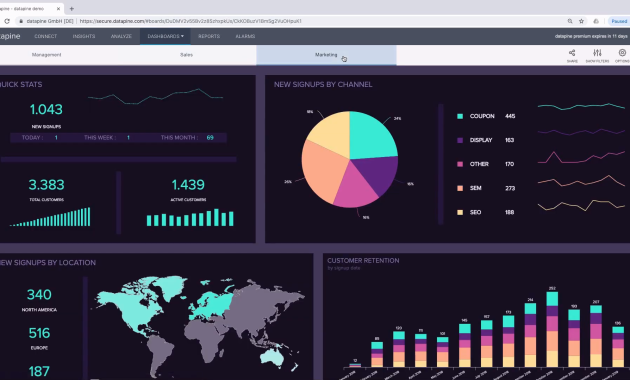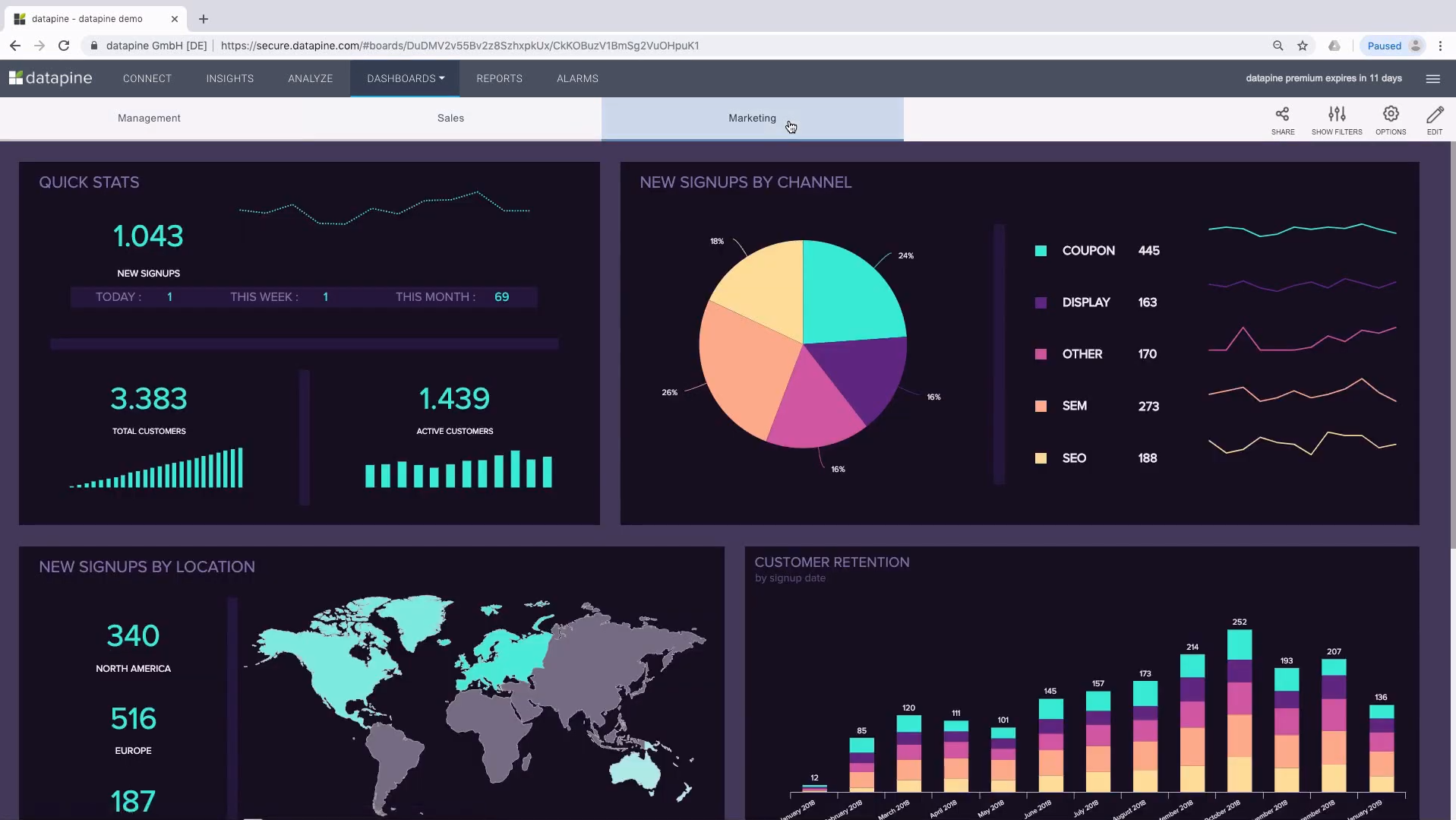
Quick Guide to Business Intelligence Software for Beginners: Decoding Data for Decision-Making
In today’s data-driven world, the ability to understand and leverage information is no longer a luxury but a necessity. For businesses of all sizes, making informed decisions is paramount to success. This is where Business Intelligence (BI) software steps in, transforming raw data into actionable insights. This quick guide to Business Intelligence software for beginners aims to demystify this powerful tool, providing a clear and concise overview for those just starting their journey into the world of data analysis.
This guide will explore the core concepts of Business Intelligence, the benefits it offers, and the types of software available. We’ll also touch upon how to choose the right BI solution for your needs and the key steps involved in implementation. Whether you’re a small business owner or a department head, understanding Business Intelligence software is crucial for staying competitive.
Understanding the Fundamentals of Business Intelligence
At its core, Business Intelligence (BI) is the process of collecting, analyzing, and interpreting data to help businesses make better decisions. It’s about turning raw data into meaningful information that drives strategic actions. This involves several key steps:
- Data Collection: Gathering data from various sources, such as databases, spreadsheets, and CRM systems.
- Data Processing: Cleaning, transforming, and organizing the collected data.
- Data Analysis: Applying analytical techniques to identify patterns, trends, and anomalies.
- Data Visualization: Presenting the analyzed data in easy-to-understand formats, such as charts and dashboards.
- Decision Making: Using the insights gained to make informed business decisions.
Business Intelligence is not just about technology; it’s also about people, processes, and the data itself. It’s a holistic approach to using data to improve business performance. The Business Intelligence software acts as the enabler, providing the tools to execute this process effectively.
The Key Benefits of Business Intelligence Software
Implementing Business Intelligence software offers a multitude of advantages for businesses. These benefits contribute to improved efficiency, profitability, and strategic planning.
- Improved Decision-Making: By providing access to accurate and timely data, BI software empowers decision-makers to make better choices, faster.
- Increased Efficiency: Automating data analysis and reporting tasks frees up valuable time for employees, allowing them to focus on more strategic initiatives.
- Enhanced Profitability: Identifying trends, optimizing processes, and uncovering new opportunities can lead to increased revenue and reduced costs.
- Better Customer Understanding: Analyzing customer data can provide valuable insights into customer behavior, preferences, and needs.
- Competitive Advantage: Businesses that leverage BI gain a significant advantage by making data-driven decisions and responding quickly to market changes.
- Improved Reporting and Compliance: Business Intelligence software can automate the creation of reports and ensure compliance with regulations.
These are just a few of the many benefits that Business Intelligence software can provide. The specific advantages will vary depending on the industry, the size of the business, and the specific BI solution implemented.
Types of Business Intelligence Software
The Business Intelligence landscape offers a wide range of software solutions, each with its own strengths and capabilities. Understanding the different types of software available is crucial for choosing the right one for your needs.
- Reporting Tools: These tools focus on generating reports and dashboards to visualize data. They are often the starting point for many Business Intelligence implementations.
- Data Visualization Tools: These tools emphasize the creation of interactive charts, graphs, and other visual representations of data. They help users explore data and identify trends.
- Online Analytical Processing (OLAP) Tools: OLAP tools allow users to analyze data from multiple perspectives. They are particularly useful for complex data analysis.
- Data Mining Tools: These tools use advanced analytical techniques to discover hidden patterns and relationships in large datasets. They are often used for predictive analytics.
- Data Warehousing Solutions: These solutions provide a centralized repository for storing and managing data from various sources. They are essential for creating a solid foundation for Business Intelligence.
- Self-Service BI Tools: These tools empower business users to analyze data and create reports without relying on IT departments. They are becoming increasingly popular.
The choice of which type of Business Intelligence software to use will depend on the specific needs of the business and the types of data being analyzed.
Choosing the Right Business Intelligence Software
Selecting the right Business Intelligence software can be a complex process. However, by considering a few key factors, you can make an informed decision that aligns with your business needs.
- Define Your Requirements: Before evaluating any software, clearly define your business goals and the specific data analysis needs you have. What questions do you need to answer? What reports do you need to generate?
- Consider Your Data Sources: Identify the data sources you need to connect to. Ensure that the software supports these sources and can handle the volume of data you have.
- Evaluate the User Interface: Choose a software with a user-friendly interface that is easy for your team to learn and use. Consider the level of technical expertise required.
- Assess the Reporting and Visualization Capabilities: Ensure the software offers the reporting and visualization features you need to effectively analyze and communicate your data.
- Consider Scalability: Choose a software that can scale to meet your future needs as your business grows and your data volume increases.
- Evaluate the Cost: Consider the total cost of ownership, including software licenses, implementation costs, and ongoing maintenance.
- Read Reviews and Get Recommendations: Research different software options and read reviews from other users. Seek recommendations from industry experts or consultants.
By carefully considering these factors, you can choose Business Intelligence software that will empower your business to make better decisions and achieve its goals.
Implementing Business Intelligence Software: A Step-by-Step Guide
Once you’ve selected the right Business Intelligence software, the next step is implementation. A well-planned implementation is crucial for ensuring a successful deployment.
- Plan and Prepare: Define the scope of the implementation, identify key stakeholders, and develop a project plan.
- Install and Configure: Install the software and configure it to connect to your data sources.
- Data Integration: Extract, transform, and load (ETL) data from your various sources into the BI system.
- Build Reports and Dashboards: Create the reports and dashboards that will provide the insights you need.
- Train Users: Train your team on how to use the software and interpret the data.
- Test and Validate: Thoroughly test the system to ensure that it is working correctly and that the data is accurate.
- Deploy and Monitor: Deploy the system and monitor its performance to ensure it meets your needs.
Implementing Business Intelligence software can be a complex process, and it may be helpful to seek the assistance of a consultant or vendor to guide you through the process. However, by following these steps, you can ensure a smooth and successful implementation.
Best Practices for Business Intelligence Success
To maximize the benefits of Business Intelligence software, it’s important to follow some best practices.
- Focus on Business Goals: Align your BI initiatives with your overall business goals and strategies.
- Prioritize Data Quality: Ensure that your data is accurate, complete, and consistent.
- Promote Data Literacy: Train your employees to understand and use data effectively.
- Foster a Data-Driven Culture: Encourage a culture where data is valued and used to inform decision-making.
- Continuously Improve: Regularly review your BI initiatives and make adjustments as needed.
- Security and Governance: Implement security measures to protect sensitive data.
By following these best practices, you can create a Business Intelligence environment that drives success for your business. A well-implemented BI strategy will provide a significant return on investment.
The Future of Business Intelligence
The field of Business Intelligence is constantly evolving, with new technologies and trends emerging. Some of the key trends to watch include:
- Artificial Intelligence (AI) and Machine Learning (ML): AI and ML are being used to automate data analysis, predict future trends, and provide more sophisticated insights.
- Cloud-Based BI: Cloud-based BI solutions are becoming increasingly popular due to their scalability, flexibility, and cost-effectiveness.
- Data Democratization: The trend of making data accessible to a wider audience within an organization is growing.
- Self-Service Analytics: Empowering business users to analyze data on their own without IT intervention.
- Big Data Analytics: Processing and analyzing extremely large and complex datasets.
Staying informed about these trends is essential for businesses that want to remain competitive in the data-driven world. The future of Business Intelligence is bright, and the potential for innovation is vast.
Conclusion: Getting Started with Business Intelligence
Business Intelligence software is a powerful tool that can transform the way businesses make decisions. By understanding the fundamentals of BI, the benefits it offers, and the different types of software available, you can choose the right solution for your needs. Implementing BI effectively and following best practices will help you unlock the full potential of your data. This quick guide to Business Intelligence software for beginners provides a solid foundation for your journey. Embrace the power of data and start making smarter decisions today. [See also: Related Article Titles]
The journey of implementing Business Intelligence software can be transformative. It’s a journey that empowers businesses to make better decisions and achieve greater success. This quick guide has provided a solid starting point for beginners. By understanding the core concepts, benefits, and types of Business Intelligence software, you can begin your data-driven adventure with confidence.

